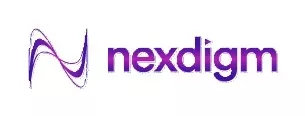- within Finance and Banking topic(s)
- within Employment and HR, Government, Public Sector and International Law topic(s)
In today's fiercely competitive business world, companies are constantly seeking innovative ways to optimize costs, boost efficiency, and hone in on what they do best. One of the most effective strategies that the top organizations are embracing is the end-to-end outsourcing of finance operations. By delegating their entire finance functions to specialized service providers, businesses can enhance process efficiency, mitigate risks, and open up new avenues for growth.
What is End-to-End Outsourcing of Finance Operations?
End-to-end outsourcing of finance operations is shifting the responsibility of managing all finance-related processes, from transactional tasks to high-level strategic functions, to a third-party service provider. This all-encompassing approach covers a wide array of functions, including:
Transactional Processing: Payables and Receivables
Payables
- Handle vendor invoices and ensure payments are made on time.
- Keep vendor master data up to date and resolve any discrepancies.
- Reconcile accounts payable balances and support month-end closing.
Receivables
- Generate customer invoices and oversee collections.
- Apply cash receipts and keep track of outstanding balances.
Non-Transactional Processing
Record to Report
- Prepare and post journal entries for period-end close.
- Reconcile general ledger accounts and support financial reporting.
Financial planning and analysis
- Develop budgets, forecasts, and financial models.
- Analyse variances between actual results and planned figures.
Tax compliance
- Prepare and file direct and indirect tax returns.
- Ensure accurate tax provision and compliance with regulations.
Treasury and Cash Management
- Monitor daily cash flow and liquidity positions.
- Perform bank reconciliations and manage payments.
Key Components of End-to-End Finance Outsourcing and how the client evaluates the performance of the service provider
Transition and Knowledge Transfer
A well-structured transition is crucial for handover processes, knowledge documentation, and migrating technology without a hitch. This typically involves process mapping, conducting thorough training sessions, and rolling out a phased go-live plan. To achieve this, a combination of transition methodologies is employed, including the Train-the-Trainer (TTT) approach, SOP-Based Knowledge Transfer, and other vetted techniques to ensure process continuity and minimize risks.
Service Level Agreements (SLAs) and Governance
Defining clear SLAs, performance metrics, and governance structures is essential for accountability and ensuring alignment with business objectives. Regular governance meetings and performance reviews play a critical role for maintaining service quality.
Process Standardization and Automation
Post-stabilization, outsourcing adopts best practices to standardize processes and leverage automation tools, which can significantly enhance efficiency. By implementing Robotic Process Automation (RPA), Artificial Intelligence (AI), and workflow automation, organizations can cut down on human intervention, streamline their operations, and accelerate transaction processing. This results in improved accuracy, quicker turnaround times, and lower operational costs. For small and medium-sized businesses, digitizing their operations can be done at a fraction of the cost compared to managing technology in-house. Outsourcing tech functions enable these companies to leverage advanced digital solutions without the high costs and complexities of in-house management. This strategy allows them to stay competitive, scale effectively, and focus on core growth areas without the burden of heavy IT investments.
Continuous Improvement and Transformation
A mature outsourcing model goes beyond just being efficient in transactions efficiency by driving continuous improvement through process reengineering, benchmarking, and innovation. Providers often introduce Six Sigma, Lean, and Agile methodologies to achieve sustainable improvements.
Potential Risks Associated with Outsourcing and How to Mitigate Them
Data Security and Privacy
Sharing sensitive data increases the risk of breaches or non-compliance with privacy laws. Organizations must implement strong encryption, access controls, and regular audits to safeguard information. Compliance with regulations like GDPR, CCPA, or HIPAA is critical to avoid legal and reputational risks.
Mitigant: Enforce strict security protocols, data encryption, and compliance audits.
Loss of Control
Handing over critical processes can lead to poor oversight and inconsistent quality. It may also result in misalignment with business objectives and delayed issue resolution. To keep things on track, it is crucial to set clear SLAs, perform regular governance reviews, and performance tracking can help maintain accountability.
Mitigant: Define clear Service Level Agreements (SLAs), conduct regular performance reviews, and establish governance structures.
Quality Assurance
Sometimes vendors may fail to meet quality standards, which can lead to inefficiencies and dissatisfaction. This can lead to rework, delays, and higher operational costs. Regular audits, KPIs, and continuous feedback mechanisms are essential to uphold service quality.
Mitigant: Track vendor performance, carry out quality assessments, and encourage continuous improvement.
Vendor Dependency
Over-reliance on one vendor can disrupt business continuity if they encounter issues. It also strengthens negotiation leverage, improves service reliability, and supports adherence to Business Continuity Planning (BCP) frameworks.
Mitigant: Diversify vendors to avoid delivery pitfalls.
Regulatory Compliance
Outsourcing to different countries may lead to compliance challenges with local laws and regulations. Variations in data protection, labor laws, and industry-specific regulations can create legal risks. It's crucial to establish clear contractual agreements and conduct regular compliance audits to avoid potential violations.
Mitigant: Collaborate with legal experts, ensure compliance with local and international laws, and incorporate regular audits.
While most F&A service providers claim to have a robust mitigation plan, companies should look for strong references and ensure that the right controls and data security are in place with strong regulatory compliance.
End-to-end outsourcing of finance operations is no longer just a cost-saving strategy—it is a catalyst for business transformation. By outsourcing critical finance processes to specialized partners, organizations can achieve operational excellence, enhance compliance, and drive long-term growth. With the right approach, technology integration, and governance, businesses can unlock unprecedented value and maintain a competitive edge in today's dynamic market.
The content of this article is intended to provide a general guide to the subject matter. Specialist advice should be sought about your specific circumstances.
[View Source]

